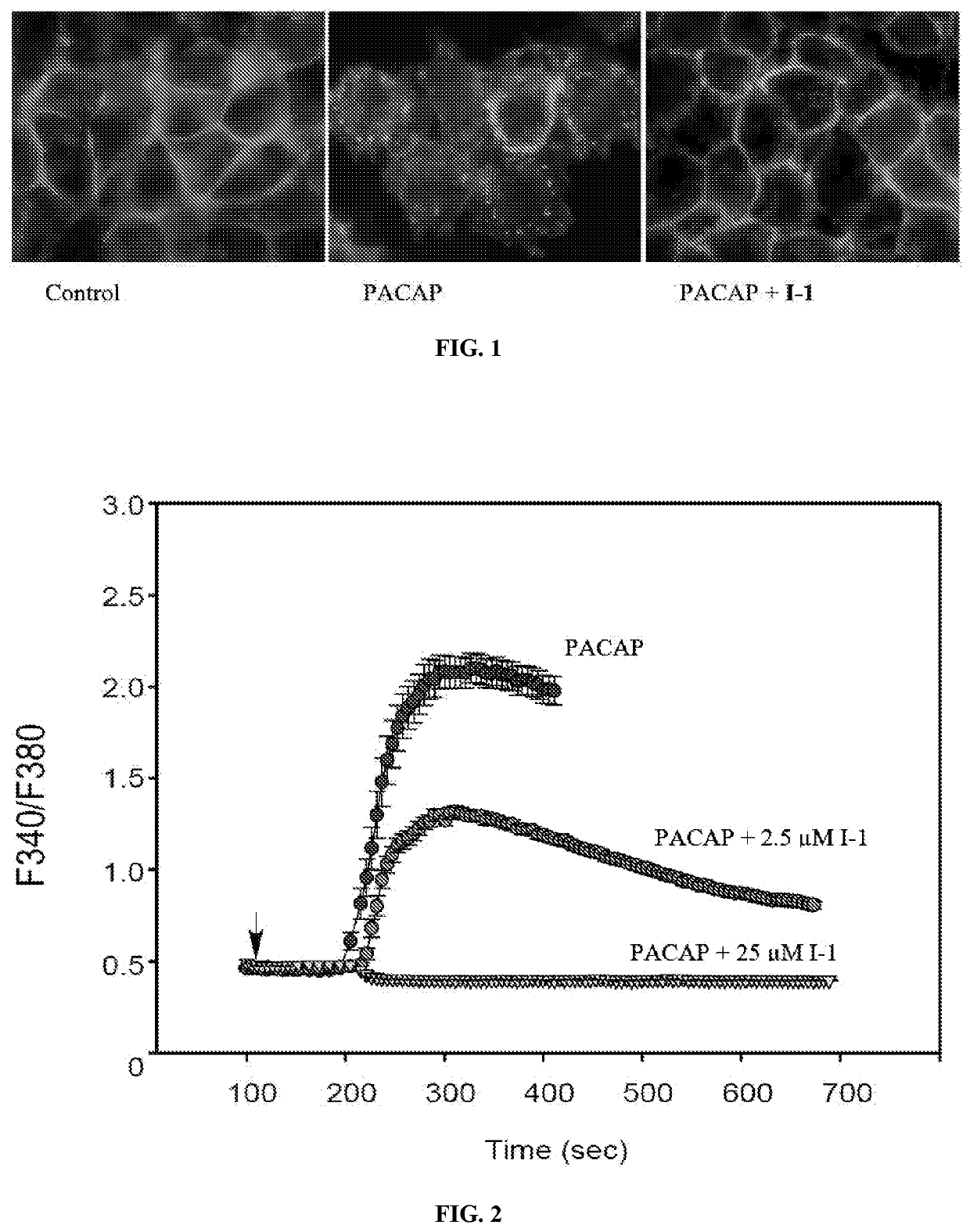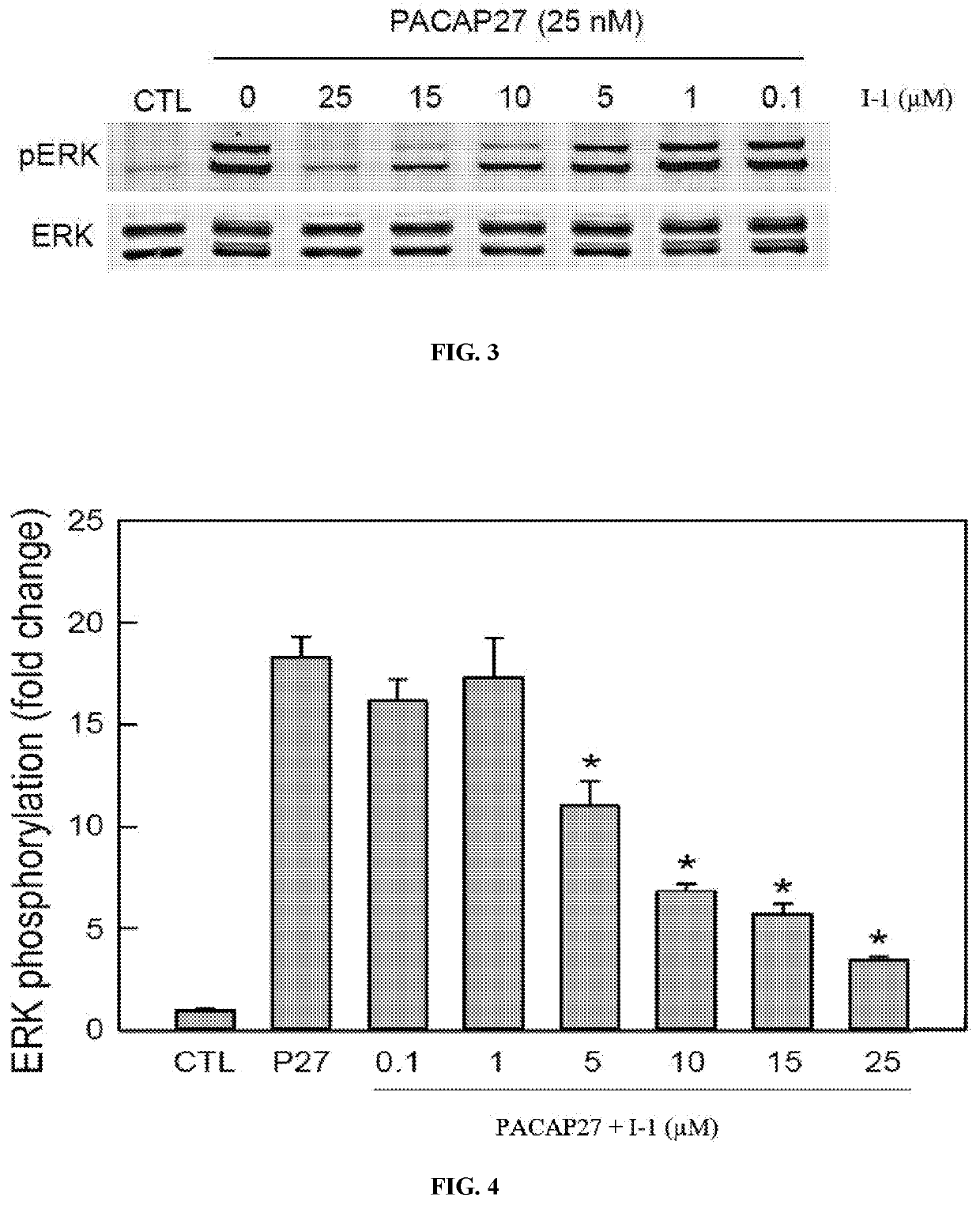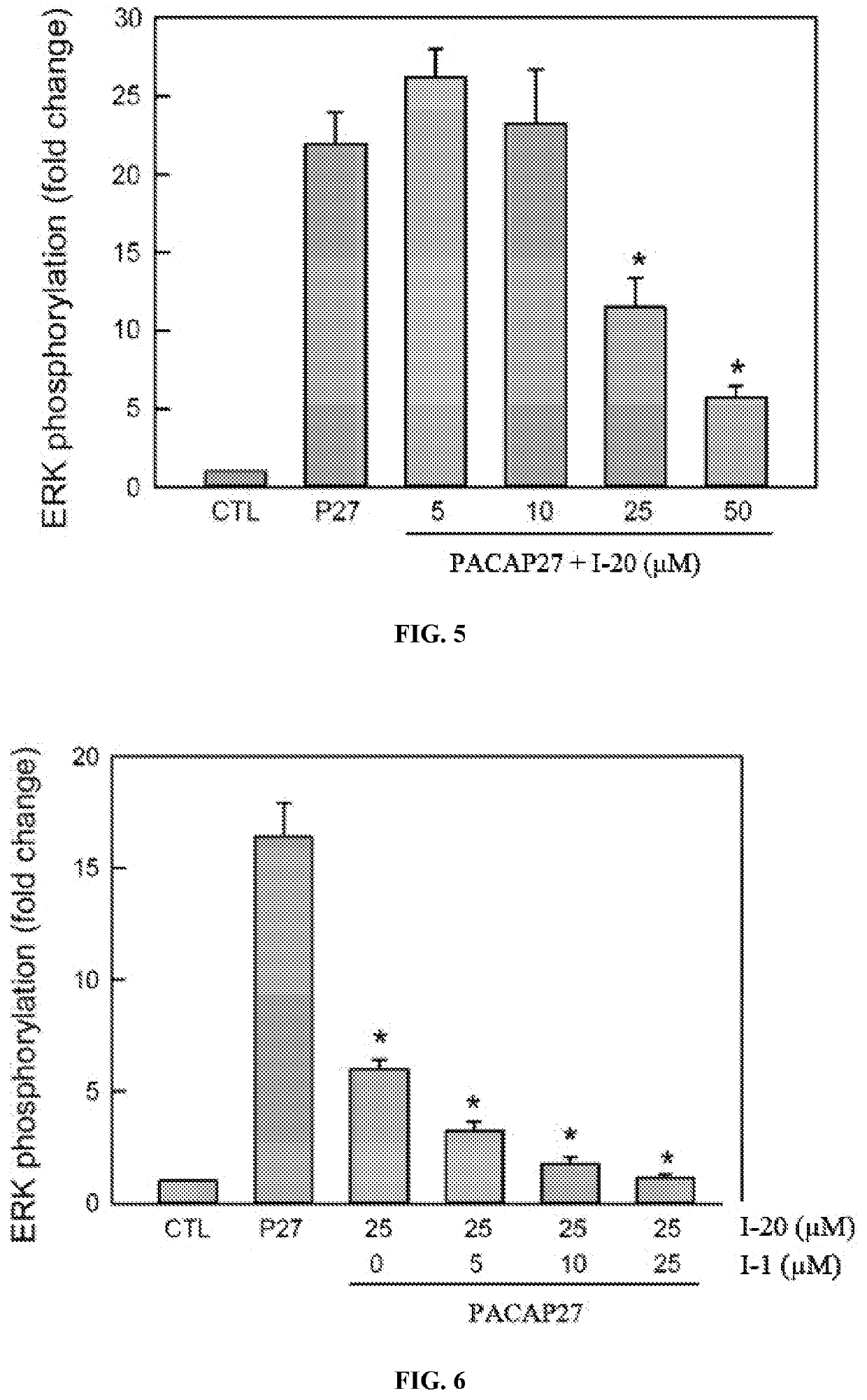Small molecule antagonist to pacap receptor and uses thereof
a small molecule antagonist and receptor technology, applied in the field of small molecule antagonists to pacap receptors, can solve the problems that the early glucagon/pacap receptor small molecule antagonists are not suited to treating stress-related and chronic pain disorder therapeutics, and achieve the effects of reducing symptoms or causes, avoiding symptoms or causes, and reducing symptoms or minimizing symptoms
- Summary
- Abstract
- Description
- Claims
- Application Information
AI Technical Summary
Benefits of technology
Problems solved by technology
Method used
Image
Examples
example 1
1 Blocks Pac1 Receptor Internalization and Calcium Signaling
[0142]Compound I-1 blocks PAC1 receptor internalization and calcium signaling. FIG. 1 shows that PAC1-EGFP receptor is preferentially expressed at the plasma membrane in a stable HEK cell line (Control). Upon 25 nM PACAP application (15 min), the tagged receptor is internalized into intracellular endosomes for ERK signaling (PACAP, middle panel). However, pretreatment of the culture (15 min) with 10-25 μM I-1 blocked PACAP-stimulated receptor internalization (PACAP+I-1); the PAC1-EGFP receptors remained on the cell surface. In FIG. 2, using the same HEK PAC1-EGFP cell line, PACAP rapidly stimulated calcium signaling in Fura-2 assays. The response was blocked approximately 50% with 2.5 μM compound I-1, and was abolished with 25 μM I-1.
example 2
1 Blocks PAC1 Receptor-Mediated ERK Activation
[0143]In FIG. 3, using the stably expressing HEK PAC1-EGFP receptor cell line, compound I-1 blocks 25 nM PACAP-stimulated ERK phosphorylation and activation (p42 and p44 ERK bands) in a dose-dependent manner. Compound I-1 at a concentration of 25 μM can block 25 nM PACAP-stimulated ERK activation to near control levels. In FIG. 4, normalized to total ERK levels, I-1 demonstrates an approximate IC50 of 8-10 μM in inhibiting PACAP-stimulated ERK activation. In similar assays, the other compounds (I-2 to I-26) can block PACAP-stimulated ERK signaling with an apparent IC50 of 25 μM.
example 3
1 and 10 can Work Synergistically in Blocking ERK Signaling
[0144]In FIG. 5, the compound I-20 acts as a glucagon receptor (GCGR) antagonist by binding to an extra-helical allosteric site on the receptor. I-20 is a weak antagonist at the PAC1-receptor compared to I-1; ERK activation is attenuated approximately 50% with 25 μM I-20. In FIG. 6, the addition of compound I-20 can increase the efficacy and potency of compound I-20 in inhibiting PACAP-stimulated ERK activation. Compared to FIG. 2, compound I-20+10 μM I-1 can block ERK activation to basal or near-basal levels.
PUM
| Property | Measurement | Unit |
|---|---|---|
| pharmaceutical composition | aaaaa | aaaaa |
| neurological disorder | aaaaa | aaaaa |
| stress | aaaaa | aaaaa |
Abstract
Description
Claims
Application Information
 Login to View More
Login to View More - R&D
- Intellectual Property
- Life Sciences
- Materials
- Tech Scout
- Unparalleled Data Quality
- Higher Quality Content
- 60% Fewer Hallucinations
Browse by: Latest US Patents, China's latest patents, Technical Efficacy Thesaurus, Application Domain, Technology Topic, Popular Technical Reports.
© 2025 PatSnap. All rights reserved.Legal|Privacy policy|Modern Slavery Act Transparency Statement|Sitemap|About US| Contact US: help@patsnap.com



